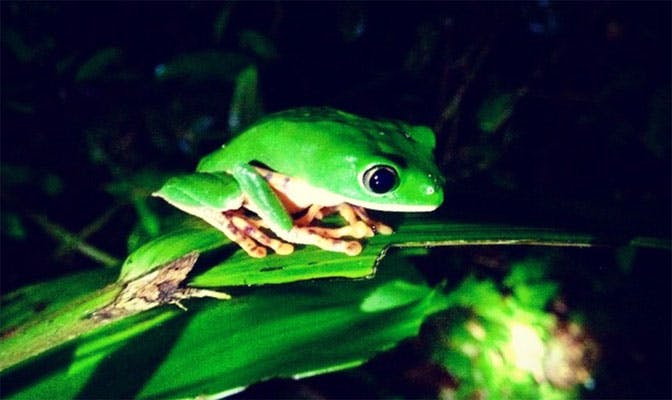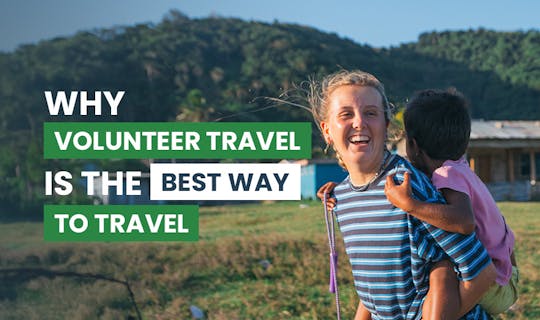
With 7 months to travel, 4 countries to cross and 1 backpack to carry, IVHQ volunteer Megan Glavin shares Part 2 of her 4-Part volunteering journey. Read about Megan's impressions of volunteering in Peru, and we'll keep you posted with her onward travels to with Sri Lanka and Thailand over the coming months, or read back over her time in Argentina!
I have spent the last six weeks in the midst of frolicking monkeys, endless rains, and every imaginable shade of green, creating a home and the adventures of a lifetime in the most unique of places: the Peruvian Amazon. Life in the jungle means a lot of dirt, sweat, and mosquito bites, but it also means waking up to the chorus of birds, falling asleep to the croaking of frogs, and spending the days trekking through an obstacle course of vines, trees, and other crazy plants; it means a whole collection of experiences that cannot be had anywhere else, and that’s what makes this place so magical.

Every day was a new adventure, working with the wildlife and plants, or hopping on the peque-peque boats to explore different parts of the jungle. When I first arrived, work consisted of a 5:00am wake-up call to catch birds, which we would bring back to Casa ITA to note their physical state before slipping a tiny, metal ring over one leg for further research. As the weeks progressed, I found myself working on everything from the surrounding trails, hacking away at unruly vegetation with the sharp blade of a machete, to the greenhouse, building gardening plots and planting a myriad of seedlings. The inescapable heat and humidity definitely had a presence, but the sense of accomplishment as I climbed into my mosquito-netted bed after a day of work, combined with the surreality of the environment I was in, made the omnipresence of the sweat and bugs (almost) negligible.
When the rainy season hit, work during the day became more difficult, and instead we would work nights, leaving after dinner and returning after midnight. These nights, we worked with amphibians and reptiles, carefully perusing every vine and leaf with our flashlights until we found something, which we would note down in a log later sent to Lima for further analysis. The jungle at night is a whole new world, full of phenomena not able to be seen in daylight, such as the countless vibrantly colored frogs and geckos, and the occasional and slightly more terrifying caiman or snake. The rainforest may not be your typical classroom setting, but I learned more from the work I did here than I would have in any ecology class.

Not every day was met with work, though, and many days were instead spent touring our surroundings. Some afternoons, we would hop on a boat to Gamitana Farm to go swimming in the adjacent creek, and then amble amongst the numerous fruit trees, plucking off starfruits and bananas when we got hungry, or sucking on a broken-off piece of sugarcane. Otherwise, we might end up at Hacienda Concepcion, the nearby botanical garden, where we would paint ourselves with the purples, reds, and blues of dye-producing fruits and leaves, before strolling through the extensive gardens, which boast natural remedies for a wide range of ailments, along with many other fascinating plants.
Lazy afternoons come often in the humid heat of the jungle, and some of the fondest moments were boating down the river and within the river itself, swimming with the present-but-not-threatening caiman and piranhas; or on land in the swinging hammock strung outside our dormitories, talking with the other volunteers and workers. Because the people contributed just as much to this experience as the work itself: Helmut and Noe, our guides, are two of the most intelligent people I know, and we would climb 30 meters into the canopy with our binoculars so Helmut could point out different types of toucans and parakeets, or join Noe on night walks and follow his flashlight to spy on sleeping sloths or interesting insects. Around Casa ITA, we would trade jokes and stories with the other workers, and the friendships I formed as a result are unforgettable.

Living in the jungle, undoubtedly, has its hardships – the bugs are relentless, the combination of humidity, rain, and sweat makes dry clothes a rare luxury, and the lack of wifi and electricity is a departure from what most are accustomed to – but that’s not what stands out when I think of the jungle. My favorite memories include sailing down the Rio Madre de Dios, with the dense greenery stretching on endlessly around me, and of mixing up lemonade from the fruits at Gamitana, to take with us camping on Isla Rolin. I look back and remember being covered, at all times, in dirt, mud, and sweat, but I remember, too, watching monkeys play with each other in the trees above me, while below me, thousands of leaf-cutting ants marched in perfect uniformity to their extensive colony. I remember all the incredible adventures, and sharing them with all the incredible people, and that’s what living in the Peruvian Amazon is really about.
Want to learn more about the Amazon Jungle Conservation project? Check out the Cusco- Peru page!

